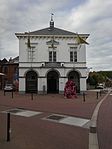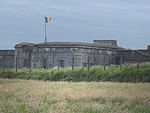Harmonium Art museuM
The Harmonium Art museuM (HAM) is a museum on pump organs in the province of Antwerp, Belgium. It is located at the former Church of the Immaculate Conception in Klein-Willebroek. The collection has been brought together by Ben Roemendael. In order to be able to show the organs to the public, he founded the museum. One can see free-reed and suction-reed organs. All instruments have been disassembled, cleaned and restored. There are eighty organs all together of which sixty can still be played on.The pump organs are originating from different countries. One suction-reed organ was built in 1872 in the United States and has two keyboards and a pipe top of Mason & Hamlin. Another, German one was made by Lindholm and has a shared left and right expression and an extension register. The museum has the largest collection of pump organs of Belgian make, like from the families Anneessens, Loret, Kerckhoff and a great many more.Beside the exposition, organ music is being performed of Belgian composers like Jacques-Nicolas Lemmens and César Franck. Other types of music are performed as well, like from a brass band or in a constellation with other musicians, like a soprano being accompanied by a pump organ and a piano.
Excerpt from the Wikipedia article Harmonium Art museuM (License: CC BY-SA 3.0, Authors).Harmonium Art museuM
Volksstraat,
Geographical coordinates (GPS) Address External links Nearby Places Show on map
Geographical coordinates (GPS)
| Latitude | Longitude |
|---|---|
| N 51.080241111111 ° | E 4.3654188888889 ° |
Address
Harmonium Art Museum
Volksstraat 55
2830 (Willebroek)
Antwerp, Belgium
Open on Google Maps









